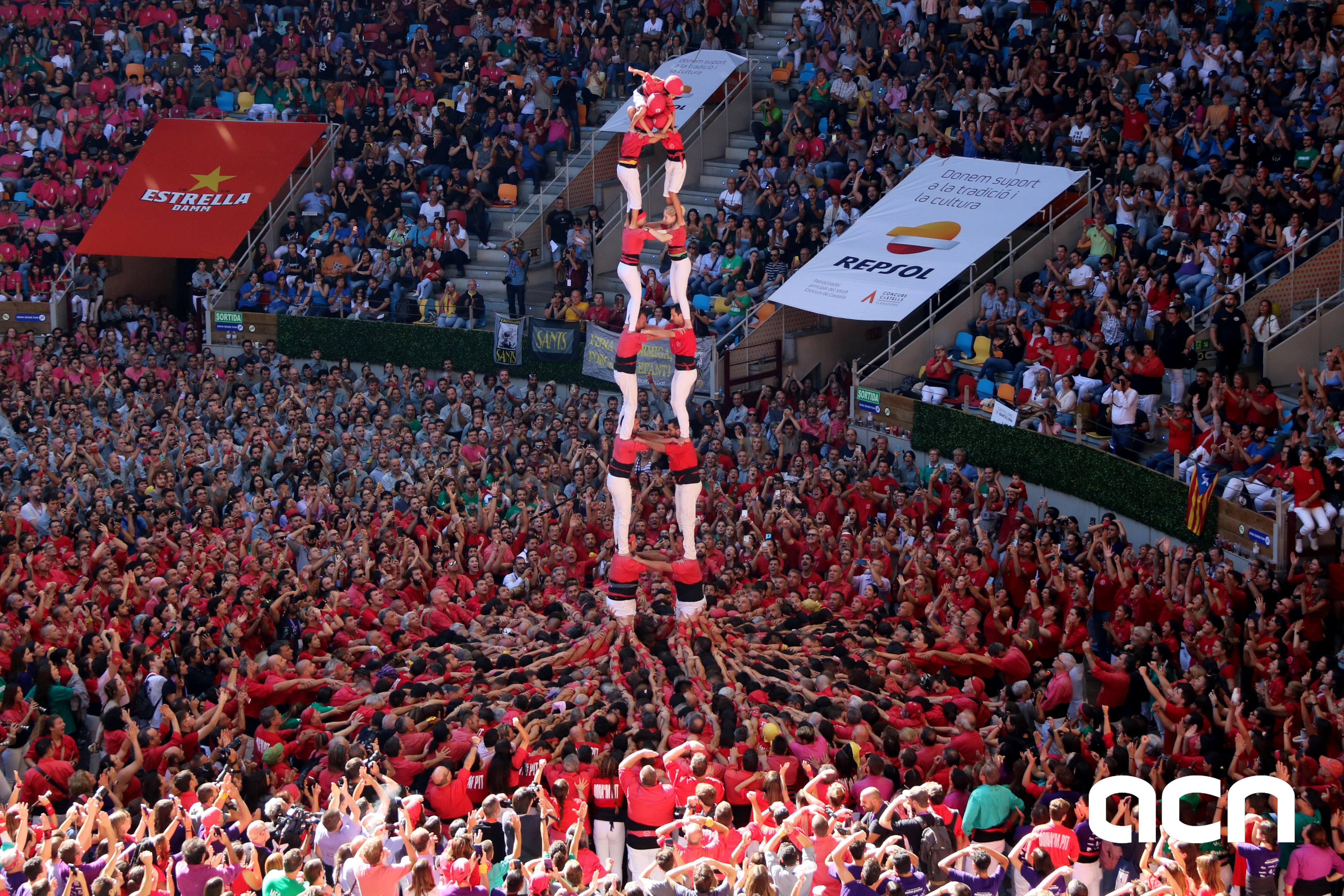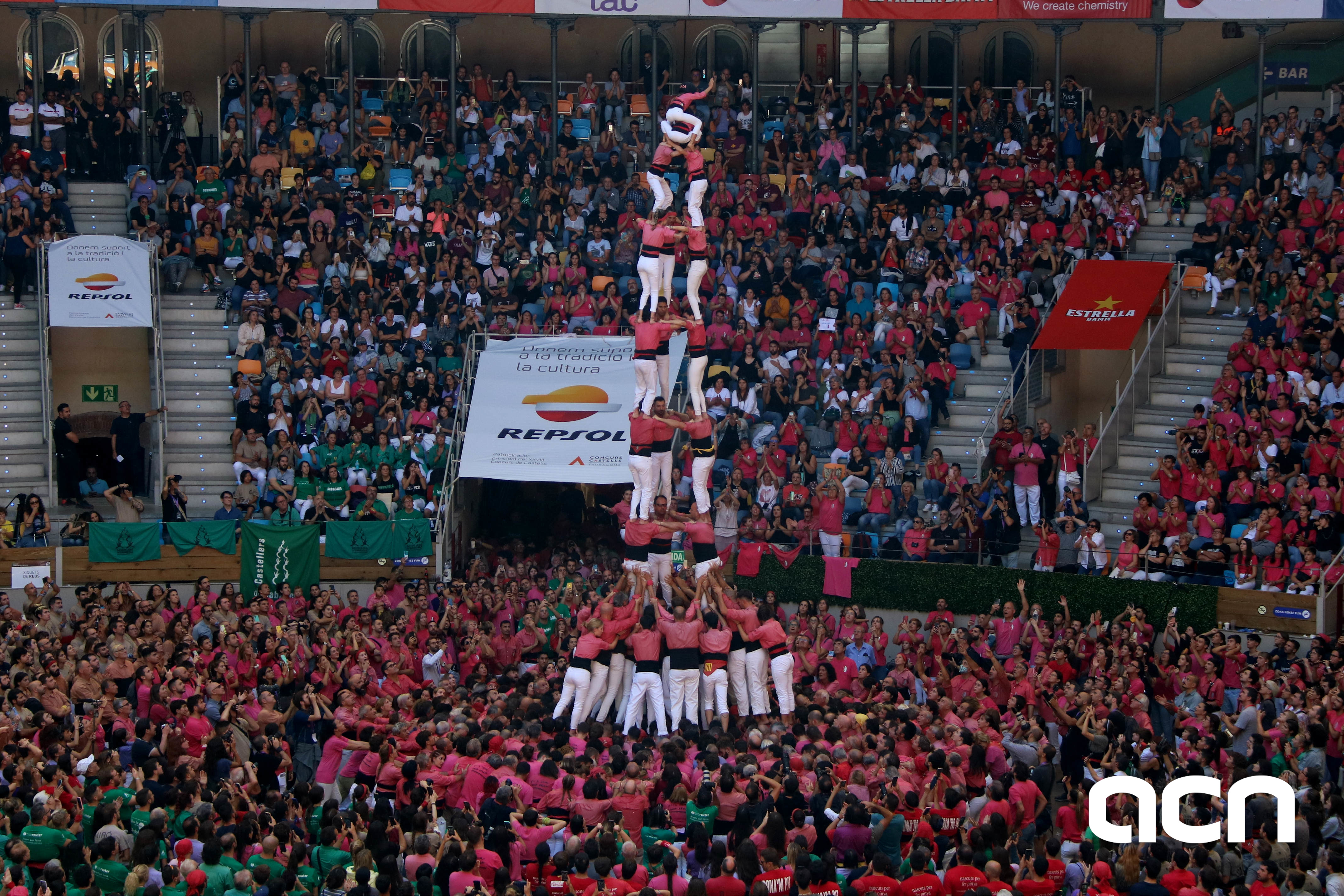Castellers de Vilafranca win world's top human towers competition with 10-tier construction
Thousands participate in gathering dating back to 1932 that draws international attention

The largest human towers gathering in the world was back this weekend and Castellers de Vilafranca won it for a 12th time.
Tarragona, in southern Catalonia, hosts the main competition of this quintessential Catalan tradition every two years – yet, due to Covid-19, the 2020 edition was postposed to this weekend.
The best 12 'castellers' groups competed on Sunday, after 17 second-tier performed on Saturday and dozens of smaller groups gathered last weekend in nearby Torredembarra.
The 'Verds', their nickname, managed to construct a ten-tier tower with three people in each, a 'tres de deu', for those into the jargon. The construction included two tiers of extra support to the base ('folre i manilles').
This was one of their key constructions that led to their victory, along with a nine-storey one with five people per tier and extra support on the base.
Both groups of Valls, in western Catalonia, both the Colla Vella and Colla Jove, were the other two front runners but fell short.

Eight-storey human tower with two people per tier and without extra support on the base by Colla Joves Xiquets de Valls / Gemma Sánchez

The Colla Vella did not get off with a good start and this left them with almost no chances for the victory too early, while the Colla Jove were in the lead after three out of the five rounds of the competition, but Castellers de Vilafranca took the lead after the fourth one.
In the end, Colla Jove Xiquets de Valls came second and the Vella of the same town came third, thus being dethroned as champions of the previous edition held in 2018.
One of the top teams, Minyons de Terrassa, never takes part in the show since they refuse the way the competition works and the fact that the audience has to pay a ticket to enter Tarraco Arena Plaça to see it – in every other 'castellers' gatherings, constructions are built in the street and anyone can enjoy them for free.
'Castellers' cultural activity came to a sharp halt in 2020 due to Covid-19, and groups slowly resumed the construction of human towers especially this year – Castellers de Vilafranca were the first team building a ten-tier tower for the first time in almost three years in last August 2022.
Competition dating back to 1932, drawing big international attention
Castellers de Vilafranca have won 11 times the competition, which dates back to 1932, while Colla Vella dels Xiquets de Valls has prevailed on 9 occasions.
Around 300 journalists were accredited in order to follow the event, including international media such as Deutsche Welle, Reuters, France Télévisions, Getty Images or AFP.
What are 'castells'?
Catalonia's 'castells' were declared an intangible heritage of humanity by UNESCO in 2010.
Large 'colles' form tiers of differing numbers of people standing on the shoulders of those below them.
Built to the sound of 'gralla' flutes and drums, human towers are only complete once a helmet-donning child called the 'enxaneta' ascends to the very top of the structure and raises their arm.
"Doing 'castells' has been a popular activity for more than 200 years and they are always associated with traditional celebrations such as ('festa major') village fairs," Ignasi Escamilla, of the Catalan human tower groups association, told Catalan News in June 2022.
According to Escamilla, however, 'castells' are more than just a thing of beauty: "They are a good example of an ideal society. It's the achievement of common goals obtained thanks to the cooperation of different team members."
Listen to our latest Filling the Sink podcast episode to learn more about 'Castells':